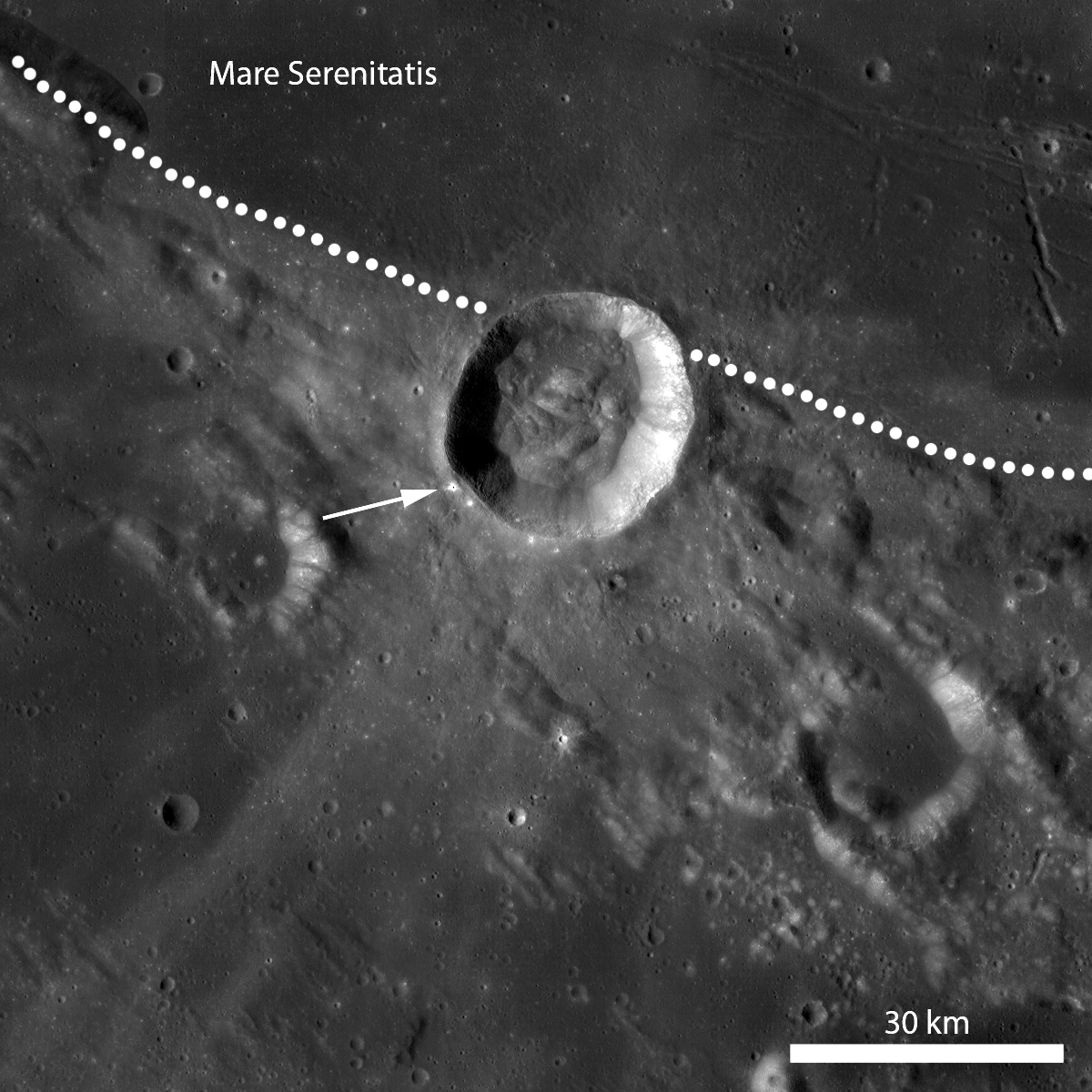
Menelaus crater (27 km diameter) straddles the highland-mare boundary at the southern margin of Mare Serenitatis. For years, scientists have wondered why Menelaus crater exhibits such a distinctive ray pattern. The distinctive ejecta pattern is partly a result of an oblique impact angle of the bolide that formed Menelaus. The ejecta rays are high reflectance relative to the surrounding terrain, but are these maturity or compositional rays? In most cases, a well-defined, high reflectance ray pattern suggests the relative youth of an impact crater. However, Menelaus crater formed in highland material, so Menelaus' rays may result more from compositional differences between the excavated material and the surrounding region, rather than the relative youth of the ejecta deposits. In fact, the optical maturity map for Menelaus crater, which is derived from Clementine multispectral data, supports this hypothesis because the crater rays are not visible, indicating that the rays are relatively mature (bright areas are immature).
Small craters, like the one above, near larger craters (<1 km diameter) help scientists unravel questions about larger impact events. This small crater is visible in Apollo Metric images and also in the Clementine optical maturity map; in the maturity map, the crater is bright and thus the ejecta material is interpreted to be immature. We know that impacts into ejecta blankets sample the material excavated during crater formation, and this recent impact into Menelaus ejecta effectively exposes material, most likely of anorthositic composition that was brought up from the floor of Menelaus. Its reflectance is low because of its physical state (glassy), not because it is a different rock type.
So, what does this small crater tell us about Menelaus crater? Since the small crater exposes immature Menelaus ejecta, we know that the surface of Menelaus is mature and thus the Menalaus rays show up due to a compositional difference (highlands on mare) and not because of a maturity contrast. This small crater provides an excellent opportunity for future astronauts to study compositional and maturity rays at the same location!
Discover the ejecta patterns of this small crater for yourself in the full LROC NAC image!
Related posts: Splendors of Mare Smythii
Rima Bode: Constellation region of interest
Small crater on the wall of Metius B
Published by Lillian Ostrach on 27 October 2010
